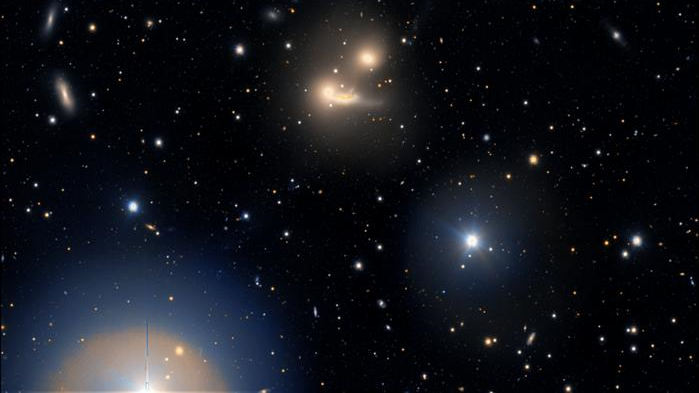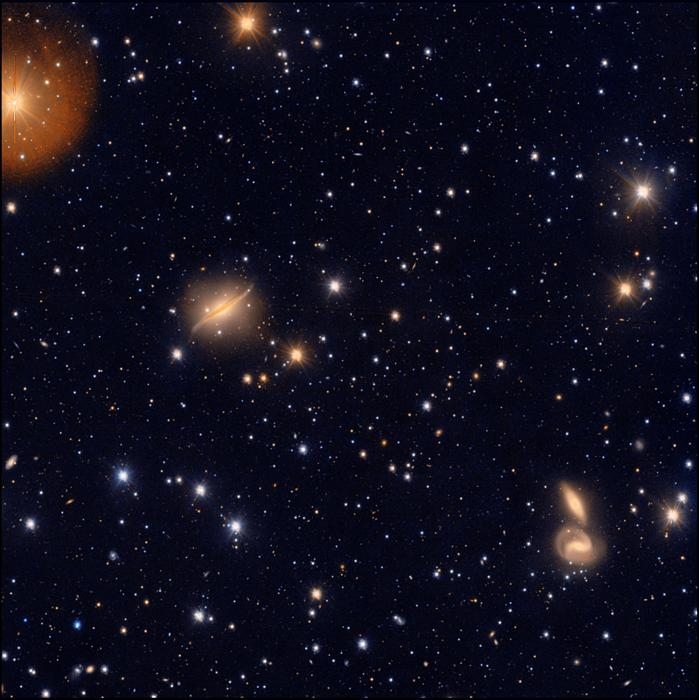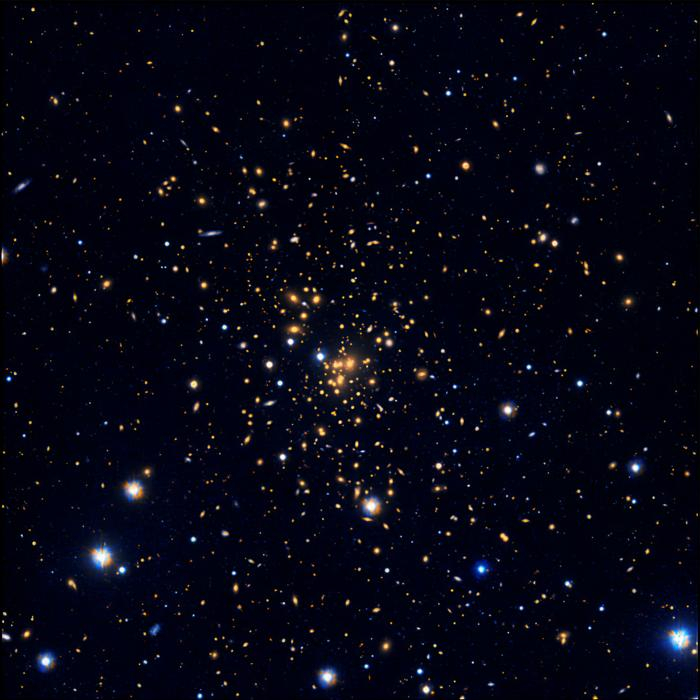
When astronomers look at galaxies, they’re often conducting a sort of archaeology. Well, cosmic archeology.
Basically, by examining what a galaxy looks like and how it interacts with its nearest galactic neighbors, it's possible to reconstruct that galaxy’s history. And one tool that astronomers can use for such work is the VLT Survey Telescope (VST), the world's largest visible-light telescope. Now, the VST has released a triptych of images depicting some of those distant galaxies necessary in uncovering galactic pasts.
One image depicts ESO 510-G13, a galaxy 150 million light-years away in the direction of the constellation Hydra. Through the points of light representing the Milky Way's stars, ESO 510-G13's central halo and S-shaped disk are clearly discernible in the center-left. The disk's form is a peculiar one, and astronomers think it may be due to the after-effect of an ancient collision this galaxy had with another galaxy. A pair of more distant galaxies are visible in the image's bottom right corner. These sit something like 250 million light-years away from us.
Related: The 15 Weirdest Galaxies in Our Universe

A second image depicts four members of a galaxy cluster, known as Hickson Compact Group 90, that are located a more modest 100 million light-years away in the constellation of Piscis Austrinus. Three of the galaxies lie near the center — NGC 7173, NGC 7176 and the spiral NGC 7174. They exchange stars and gas with each other, creating a glowing halo that interlaces them together. A fourth galaxy, NGC 7172, sits alone in the top of the image; the supermassive black hole in its center is shrouded beneath dark dust.

The third and final image depicts a cluster ten times more distant than either of the other two: Abell 1689, located more than 2.3 billion light-years away in the constellation Virgo. Abell 1689 actually contains more than 200 galaxies within. Together, their colossal mass warps the space-time around them — creating a gravitational lens that distorts the light from galaxies behind.
Located at the European Southern Observatory's Paranal Observatory in Chile, the VST has been observing the skies since 2011. The telescope's operators plan to publish more images in the coming months.
Get the Space.com Newsletter
Breaking space news, the latest updates on rocket launches, skywatching events and more!
Join our Space Forums to keep talking space on the latest missions, night sky and more! And if you have a news tip, correction or comment, let us know at: community@space.com.

Rahul Rao is a graduate of New York University's SHERP and a freelance science writer, regularly covering physics, space, and infrastructure. His work has appeared in Gizmodo, Popular Science, Inverse, IEEE Spectrum, and Continuum. He enjoys riding trains for fun, and he has seen every surviving episode of Doctor Who. He holds a masters degree in science writing from New York University's Science, Health and Environmental Reporting Program (SHERP) and earned a bachelors degree from Vanderbilt University, where he studied English and physics.









